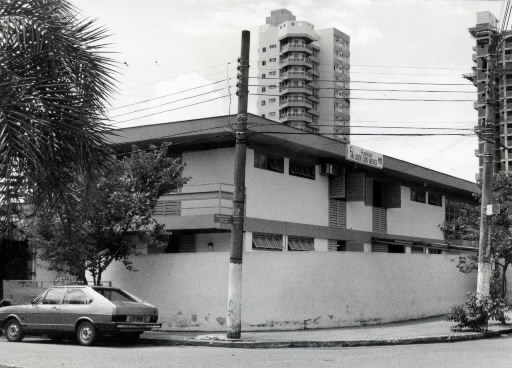4. Outcasts of Society
Mar. 25, 2013
Chapter 6: Brazil and Namibia
Part 1: Cesium Contamination in Goiânia
Part 1: Cesium Contamination in Goiânia
After the four victims of cesium contamination had been buried, the local people's attention turned to the survivors. Ostracized by their neighbors and uncertain in their own minds about their health, they became increasingly isolated from the rest of the community. The unpretentious concrete building in central Goiânia that houses the headquarters of the Leide Foundation seems to be the survivors' only refuge from the vilification of their fellow citizens.
The twenty staff members of the foundation include six doctors, who not only treat those affected by the cesium but also provide food rations and assistance in finding housing and work. People pour into the building every day with worries about their health and their future. For many of the victims, the ignorance of their neighbors has made it extremely difficult to lead a normal life.
Sitting dejectedly on a bench in the foundation's offices was Madalena Goncalves, a black woman aged fifty-two. "I've been on TV so many times in connection with the contamination that now my neighbors are too frightened to talk to me," she confided.
Goncalves is single and was working in the home of Leide's family when she came into contact with the glittering powder. Her hands swelled up and came out in blisters, and her health has never been the same since. After Goncalves's shack was torn down for fear of contamination, the foundation found her new accommodation, but her new neighbors will have nothing to do with her. She comes to the offices every morning at seven and whiles away the hours until they close at six.
Odesson Ferreira stood in the entrance to the foundation offices playing with her two-year-old daughter. Her husband had been given some of the cesium powder by the scrap dealer, and as a result he had had to have the swollen ringers of his right hand amputated. He is unable to find work because of his connection with the cesium contamination. The family's house and all its contents, including the six pigs they kept, were packed into drums and taken away to prevent further contamination. The Ferreiras' new neighbors abuse them whenever they step out the door, and as Odesson told us, "The foundation is the only place where we can go."
At the foundation they receive food and a living allowance. The amount that victims are entitled to receive range from 55 cruzeiros (approx. U.S. $30) to 165 cruzeiros per month, depending on a number of factors, such as the income of the family. The foundation also rents houses to those whose own had to be destroyed to prevent secondary contamination, although the victims would prefer homes in their own names rather than rental accommodation. The foundation also provides food rations every fifteen days. The recipients claim, however, that the allowance is insufficient and that the food is like "pig swill."
Edson Ferrari, head of public relations for the foundation, retorted: "The allowance is not below the minimum wage, and the food is the same as that served in municipal and state hospitals. If we increase the amount, they'll just sell it, and if we give them houses rather than rented accommodation, they'll do the same."
At present twenty-one families, a total of ninety-six people, are totally dependent on handouts from the foundation. These, however, represent only some of the victims; others are cut off from all such assistance.








